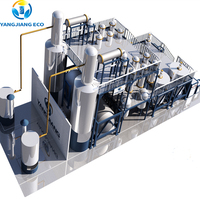Categories
Tags
-
#Waste Oil to Diesel
#Land Rig Installation
#Used Engine Oil Recycling
#Transformer Oil Dehydration
#Sodium Fusidate
#Lube Oil Refining
#Dabigatran
#Fire-Resistant Oil Filtration Machines
#Active Pharmaceutical Ingredients
#Dry Air Generator
#Dry Air Generators
#Transformer Oil Filtration Machine
#Base Oil Extraction
#Drum Scales
#Used Oil Re-Refining
#Vacuum Transformer Oil Purification
#Waste Oil into Diesel
#Apalutamide API
#Transformer oil purifier
#Waste Oil Distillation
#Dot Peen Engraving
#Scribe Marking Machines
#Laser Cleaning Machine
#Mill Finish Aluminium Disc
#Scribe Marking Machine
#Integrated Scribe Marking Machine
#Aluminum trim coil
#Aluminium Circles
#Diesel Desulfurization Machines
#Aluminum Circles
#Transformer Oil Regeneration Machines
#Aluminium Sheets
#Base Oil Distillation Machine
#Cummins Power Command generator controller
#Waste Oil to Diesel Distillation Plant
#Cummins Injector Cups
#Solvent Extraction Plants
#Cummins Injector Plunger Link
#Diesel Desulfurization Machine
#Fiber Optic AOMs
#Waste Oil Recycling
#Marble Grain Aluminum Coil
#Lube Oil Blending
#Lube Oil Refinery Plant
#Waste Engine Oil Refining Plant
Archives
How to Reduce Energy Consumption in Solvent Extraction Plants
-
Solvent extraction is a crucial process in industries like oil refining, pharmaceuticals, and chemical manufacturing. However, it is also energy-intensive, contributing to high operational costs and environmental impact. Reducing energy consumption in solvent extraction plants not only cuts costs but also enhances sustainability. Here are some effective strategies to achieve energy efficiency in these facilities.
1. Optimize Solvent Recovery Systems
A significant portion of energy in solvent extraction plants is used for solvent recovery, typically through distillation or evaporation. To minimize energy waste:
Use multi-effect evaporators – These systems reuse heat from one stage to the next, reducing steam requirements.
Implement mechanical vapor recompression (MVR) – MVR systems compress vapor to reuse its heat, cutting energy use by up to 80% compared to conventional evaporators.
Optimize condenser efficiency – Proper cooling water management and heat exchanger maintenance can improve recovery efficiency.
2. Improve Heat Integration
Heat integration ensures that waste heat from one process is reused elsewhere in the plant. Strategies include:
Installing heat exchangers – Recovering heat from hot process streams to preheat incoming feed reduces boiler load.
Pinch analysis – This technique identifies optimal heat recovery opportunities by analyzing temperature differences in the process.
3. Upgrade to Energy-Efficient Equipment
Older equipment often consumes more energy than necessary. Consider:
High-efficiency motors and pumps – Variable frequency drives (VFDs) can adjust motor speed based on demand, reducing electricity use.
Advanced distillation columns – Structured packing or dividing-wall columns improve separation efficiency, lowering energy needs.
4. Optimize Process Parameters
Adjusting operational parameters can lead to substantial energy savings:
Lower extraction temperatures – If possible, reducing temperature without compromising yield can cut heating costs.
Improve solvent selection – Using solvents with lower boiling points reduces distillation energy.
Automate controls – Advanced process control (APC) systems optimize real-time energy use by adjusting flow rates, temperatures, and pressures.
5. Implement Waste Heat Recovery
Waste heat from exhaust gases, cooling systems, or condensers can be repurposed for:
Preheating feed material
Generating low-pressure steam
Supporting space heating in the facility
6. Regular Maintenance and Leak Prevention
Energy losses often occur due to poor maintenance:
Fix steam and solvent leaks – Even small leaks lead to significant energy waste over time.
Insulate pipes and vessels – Proper insulation minimizes heat loss in distillation and extraction processes.
7. Use Renewable Energy Sources
Integrating renewable energy can offset fossil fuel consumption:
Solar thermal systems – For low-grade heating needs.
Biomass boilers – Using organic waste as fuel for steam generation.
Conclusion
Reducing energy consumption in solvent extraction plants requires a combination of process optimization, equipment upgrades, and waste heat recovery. By adopting these strategies, plants can lower operational costs, improve sustainability, and comply with environmental regulations. Investing in energy efficiency not only benefits the bottom line but also supports a greener industrial future.

